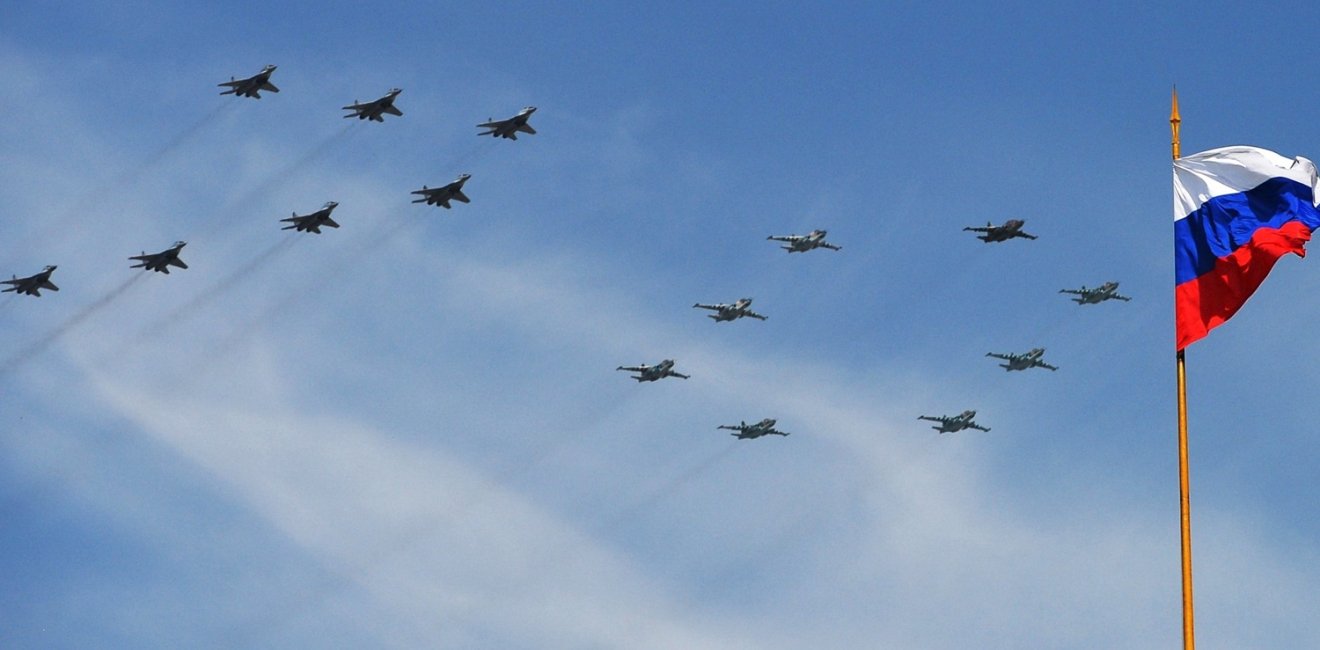The Real Risk of Unintended U.S.-Russia Conflict
A war between Russia and the United States is more likely today than at any time since the worst years of the Cold War.
A war between Russia and the United States is more likely today than at any time since the worst years of the Cold War.

A war between Russia and the United States is more likely today than at any time since the worst years of the Cold War. This may sound implausible or exaggerated to policymakers, journalists and the wider public. Yet the fact remains that increasing deployments by both sides, coupled with severely constrained direct dialogue, mean that dangerous incidents will become far more likely and will be far harder to defuse and de-escalate.
At NATO’s recent summit in Warsaw, the alliance’s heads of state trumpeted their commitment to reassure its easternmost members. They plan to deploy four battalions—some 4,000 combat soldiers—to eastern Poland and the Baltic states, in close proximity to Russia’s historical capital, St. Petersburg, and its heavily militarized exclave of Kaliningrad, which is surrounded entirely by NATO member states and just 300 miles from Berlin. The U.S. component of this effort, dubbed the European Reassurance Initiative, amounts to nearly $4 billion and will support troop rotations, training missions and more exercises with regional U.S. allies and partners, including Georgia and Ukraine. Romania and Bulgaria, both NATO allies with significant Black Sea coastlines on Russia’s southern flank, have asked for a NATO naval force, while a U.S.-led European missile defense system will include interceptor batteries in both Poland and Romania.
If all of this sounds like NATO is preparing to defend its eastern members from a Russian onslaught, that’s because it is—sort of. Almost no one in the senior levels of NATO or the U.S. defense community expects a traditional military invasion of any NATO country by Russian forces. Instead, the concern is about a Russian hybrid threat, so-called little green men that Moscow deployed in Crimea and eastern Ukraine, or nefarious Russian influence via economic pressure and incessant propaganda. Rather than actually fighting the Russians across the landmass of Eastern Europe or on the high seas, NATO’s purpose might be better understood as reassuring nervous Eastern allies, so that they can undertake the far harder diplomatic, domestic political and economic development work needed to reduce their own vulnerabilities.
That makes sense as far as it goes. The problem is that NATO’s reassurance efforts don’t take place in a vacuum. For each NATO deployment in its immediate neighborhood, Russia has promised responses of its own. Russian countermoves have so far ranged from snap exercises to the formation of three new division headquarters on Ukraine’s eastern border and the deployment of nuclear-capable missiles to Kaliningrad.
Far more worrisome than the abysmal state of formal conflict-management mechanisms are the states of mind on both sides.
With increasing concentrations of troops, tanks, ships and airplanes in close proximity, it is no surprise that both sides have complained of recent “near-miss” incidents at sea and in the air, most notoriously in April, when a Russian fighter buzzed the U.S.S. Donald Cook in the Baltic Sea, passing just 30 feet above the ship’s deck. When asked why the U.S. destroyer did not respond by firing warning shots, Navy Capt. Rick Hoffman conceded, “Well, we’re not at war with Russia.”
Unfortunately, such a sanguine assessment may not apply in the skies above Syria, where U.S. and Russian forces have come uncomfortably close to direct engagement, while a proxy war rages between U.S. and Russian allies on the ground. In November, Turkish air defenses downed a Russian Su-24 jet that they claimed had strayed across the Turkish-Syrian border, forcing the rest of NATO to quietly disavow Ankara’s move at some cost to collective credibility. In June, Russian aircraft bombed a position in southern Syria that the U.S. said was held by the Free Syrian Army. U.S. F-18s were scrambled to warn the Russians away, but the Russian aircraft conducted a second bombing run while the U.S. jets were still in the area.
It is only a matter of time before more such dangerous incidents between Russian and U.S. or NATO forces occur. The question then will be how well-equipped both sides are to manage the consequences. Judging by the state of the relationship overall, the answer is not very well at all.
During the Cold War, dangerous “red on blue” incidents—brushes with unintended escalations—and full-blown crises, such as over Berlin in 1961 and Cuba in 1962, led to détente between Moscow and Washington. Both recognized that while their ideologies were fundamentally opposed, neither could fully dislodge or destroy the other, so they prioritized managing the costs and consequences of competition. From that time on, the relationship benefited not only from technical innovations like the famous White House-to-Kremlin hotline, but frequent contact between military and civilian officials at various levels, as well as formal mechanisms for conflict management, such as the 1972 Incidents at Sea agreement, the Open Skies Treaty, the Treaty on Conventional Armed Forces in Europe (CFE) and the Vienna Document.
Compare the infrastructure for conflict management of three or four decades ago with the state of today’s U.S.-Russia confrontation. Although Presidents Vladimir Putin and Barack Obama have had dozens of direct calls and face-to-face conversations, and their senior diplomats meet regularly to exchange proposals on Syria, Ukraine and other pressing issues, the formal channels for crisis management and mitigation have been practically dismantled. In the aftermath of Russia’s Ukraine invasion, Washington declared a freeze on the U.S.-Russian Bilateral Presidential Commission, including its military-to-military working group. Meetings of the NATO-Russia Council were likewise suspended. The Russians, for their part, have withdrawn from the CFE treaty and are accused of frequent violations of other commitments, from the Vienna Document to the Intermediate-Range Nuclear Forces Treaty, or INF.
Far more worrisome than the abysmal state of formal conflict-management mechanisms are the states of mind on both sides. For half a century, U.S. and Russia leaders had experienced firsthand either the devastation of World War II or the Cold War’s ugliest proxy conflicts in Vietnam and Afghanistan. They recognized the need to contain the U.S.-Soviet rivalry, in order to ensure that hostile interactions between two vast and far-flung military forces did not escalate into unintended conventional, and potentially nuclear, conflict.
A different way of thinking now prevails. Three decades of U.S. predominance has bred complacency, and Americans are not in the habit of dealing with peer rivals of the sort Russia aspires to be. Rather, Washington is largely convinced that Russia is a power in structural decline, with little or no ability to challenge U.S. prerogatives in the long term. Russian leaders, for their part, see an overstretched and overbearing American hegemon that can hardly muster the resources or attention to manage the challenges that strike closest to home, let alone those half a world away. Some wait hopefully for the gust of wind that will collapse the house of cards of U.S. power.
Either or both sides might be right in the long term. But in the here and now, both are running unacceptable risks that their increasingly adversarial postures across an arc of conflict from the Baltic to the Middle East will result in unintended escalation. Mitigating this risk does not mean abandoning allies or compromising cherished principles; it simply means learning the lessons of history. For every action, there is a reaction, and preventing that cycle from spinning out of control requires clear channels for dialogue, with leaders on both sides who are prepared to use them.
The opinions expressed here are solely those of the author.
This article originally appeared in World Politics Review


The Kennan Institute is the premier US center for advanced research on Eurasia and the oldest and largest regional program at the Woodrow Wilson International Center for Scholars. The Kennan Institute is committed to improving American understanding of Russia, Ukraine, Central Asia, the South Caucasus, and the surrounding region through research and exchange. Read more


